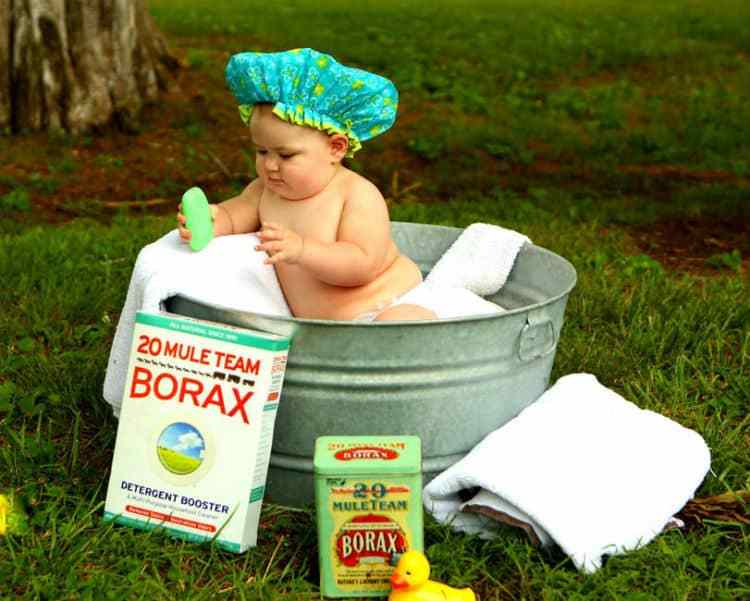
Everyday Uses of Alkali Metals
October 29, 2024 - Emily Newton
Revolutionized is reader-supported. When you buy through links on our site, we may earn an affiliate commission. Learn more here.
For the average person, a periodic table is something that brings back memories of high school science classes, but it can be a treasure trove of information. If you’ve forgotten your lessons, don’t worry — we’re here to make things a little easier for you. To help you navigate the data available, we’ve pulled together some everyday uses for a number of different element groups, starting with the Alkali Metals.
What are alkali metals and where might you encounter them in your everyday life?
Properties of Alkali Metals
The periodic table is divided into groups based on the number of electrons in each element. Group 1 is the alkali metals. What are the alkali metals? They include:
| Common Alkali Metals | Rare Alkali Metals |
|---|---|
| Lithium | Rubidium |
| Sodium | Cesium |
| Potassium | Francium |
All of these metals have a single electron in their outer orbit and thus display very similar physical properties. They’re all soft metals that are easy to cut. All of the alkali metals, with the exception of cesium, are also white in their pure state.
Chemical and Physical Traits
Other than their physical similarities, what traits indicate the presence of an alkali metal?
First, all of these chemicals are usually not found in their pure state in nature because they are very reactive. The violence of their reactions varies depending on the individual metal, but they will react when they come into contact with water. Some, like sodium and cesium, react so violently that they can even explode! That’s why these chemicals normally exist as salts in nature.
They also tarnish very quickly when exposed to air. If you’re not sure which alkali metal you’ve got on hand, you can light it on fire to determine which one you have — they all burn different colors. A quick flame test will show:
- Lithium burns red
- Sodium burns orange
- Potassium burns lilac (pink)
- Rubidium burns red-violet
- Cesium burns blue or blue-violet
In their pure state, these metals are almost always stored in oil or another non-reactive substance.
Real-Life Applications
Where might you encounter alkali metals in your everyday life? Here are some examples:
Lithium
Lithium isn’t found naturally in its elemental form, preferring to bond with oxygen to make lithium oxide. First discovered in 1817, it only makes up 0.0007% of the Earth’s crust. It is also the lightest known metal on the planet. You’ll often find it alloyed with other similar materials like aluminum and copper.
The lithium industry is having a massive boom because of the renewable energy sector mining the material. It has a lot of potential alongside some contention for decarbonizing industry and creating resilient products. However, it strips a lot from the planet in exploitative mining practices when people do find it.
There are several different applications for lithium and its alloys, though you might not encounter many of them in your everyday life.
Uses for Lithium
- Mental health medication: Psychiatrists use lithium carbonate to treat individuals with bipolar disorder and schizophrenia.
- Physical medical health devices: Pacemakers use lithium to power their life-saving features and keep them powered for almost a decade.
- Air Purification: If you want to travel to space, you’ll want some lithium hydroxide. Aerospace engineers use it to remove carbon dioxide from the atmosphere in spacecraft.
- Lubricants: Head to your local auto parts store and pick up some white lithium grease. It’s ideal for delicate moving parts.
- Rechargeable batteries: Electric vehicles heavily leverage lithium-ion batteries and so do other consumer electronics like phones and laptops.
Sodium
For a long time, scientists couldn’t tell the difference between sodium and potassium. In fact, until 1807, people considered them to be the same element. Sodium is incredibly volatile. If you ever get your hands on pure sodium, you’ll find it packed in mineral oil to prevent water from coming into contact with it. Unlike many other elements, sodium’s chemical symbol doesn’t match its name. That’s because scientists named it after natrium, the Latin word for sodium carbonate.
Despite being known for impacting blood pressure and stressing out the heart, sodium has tons of other uses outside being consumed in excess — yet delicious — quantities.
Uses for Sodium
- Seasoning your food: The most recognizable form of sodium is as sodium chloride, otherwise known as table salt. You probably have some in your kitchen right now.
- Plastics: Manufacturers need sodium in a metallic form to construct some types of plastic for packaging.
- Cleaning your kitchen: If you use borax to clean your kitchen or bathroom, you have sodium borate.
- Streetlights: If you’ve ever seen a bright yellow streetlight, thank sodium. Sodium vapors contained in the bulbs help it create that color.
- De-icing: Tough winters face sodium every day, as households and businesses spread giant crystals all over their paths and driveways.
Potassium
Of the alkali metals on this list, potassium is probably the one you’re most familiar with. It’s the eighth-most abundant mineral in the Earth’s crust. Scientists discovered it in 1807, the same year they found sodium. Like most of the other alkali metals, you won’t find it in its pure elemental form in nature. Instead, you have to obtain it via electrolysis from other minerals like sylvite and polyhalite. It’s so volatile that you have to store it in kerosene to prevent it from reacting.
Potassium is crucial for consumer products but also the human body. Low potassium impacts so many bodily functions you wouldn’t even realize it. It boosts everything from the nervous system to the heart. This is why our first listed use for potassium is for eating.
Uses for Potassium
- Necessary nutrition: Bananas and other natural foods contain potassium. It helps your body manage muscle contractions and nerve signals. If you have a cramp in your leg, it’s a good sign that you need more potassium in your diet.
- Fertilizer: Potash fertilizer keeps plants from yellowing and growing poorly.
- Glass and gunpowder: Potassium carbonate is a vital component in both glass. As potassium nitrate, you’ll find it in gunpowder, as well.
- Detergent: Potassium carbonate is perfect for soap and detergents because it is a natural degreaser and water softener.
- Car batteries: If makers don’t want to use sodium in car batteries, potassium is a suitable alternative.
Cesium
Now we’re getting into the rare alkali metals. Cesium is an incredibly reactive element. Like the rest of the alkali metals on this list, you won’t find it in its elemental form in nature. Instead, it is usually found mixed with rubidium, another element on this list. Despite being one of the rarest metals, there are a few applications for cesium.
One of its most well-known uses is in the drilling industry, but it is an environmentally destructive activity. Experts put cesium in drilling fluids, which makes it safer than other injectables in the sector. However, it cannot excuse how dangerous mass drilling is on ecosystems just because cesium is a better alternative than other fluids.
Uses for Cesium
- Atomic clocks: An isotope of cesium — cesium 133 — is the element that is most often found in atomic clocks because it measures the necessary resonant frequencies accurately.
- Photoelectric cells: Cesium is often used in solar cells to convert sunlight into electricity.
- Ion engines for spacecraft: Cesium ionizes easily, which will eventually make it ideal for propellant ion engines for spacecraft. We’re still working on that technology.
- Oxygen removal: A few cases require oxygen to be removed from a space before interacting with it, such as light bulbs. Cesium extracts it from the space with ease.
Rubidium and Francium
These two elements are lumped together because they’re so rare that there are no real applications for either of them. You’ll never encounter rubidium or francium in your daily life. Rubidium is more common than cesium and francium, but unless you are manufacturing vacuum tubes or building ion engines for spacecraft, you won’t find it in your daily life. The most common place you will see them isn’t on a regular day — try a holiday. Fireworks obtain red hues with rubidium. Some could say it’s a necessity, at least for celebrating the Fourth of July in the United States.
Francium is produced when another element — actinium — decays. Its half-life is so short that experts estimate there is less than an ounce on the planet at any given time. Outside of a laboratory, there are no applications for francium except in potential cancer treatment. It is intensely radioactive, so it would only be safe to use in a lab setting.
However, researchers are working on medical applications because of how potent it could be. Francium will likely have no other commercial uses outside of this simply because it is too unavailable to depend on for something at scale.
Spotting Alkalis
The alkali elements are some of the most interesting on the periodic table because of their diversity in application. From spacecraft to kitchen cleaners, they run a spectrum of delicious and practical.
Where have you spotted alkali metals in your everyday life? If you’ve got any questions about alkali metals or about any of our previous or even upcoming posts, let us know! We’d love to hear from you!
Learn more about the period table and it’s other groups now!
This article originally published 01/04/2018. We updated it on 10/29/2024 to expand the section of Real Life Applications with more in-depth uses of alkali metals.
Revolutionized is reader-supported. When you buy through links on our site, we may earn an affiliate commission. Learn more here.
Author
Emily Newton
Emily Newton is a technology and industrial journalist and the Editor in Chief of Revolutionized. She manages the sites publishing schedule, SEO optimization and content strategy. Emily enjoys writing and researching articles about how technology is changing every industry. When she isn't working, Emily enjoys playing video games or curling up with a good book.






